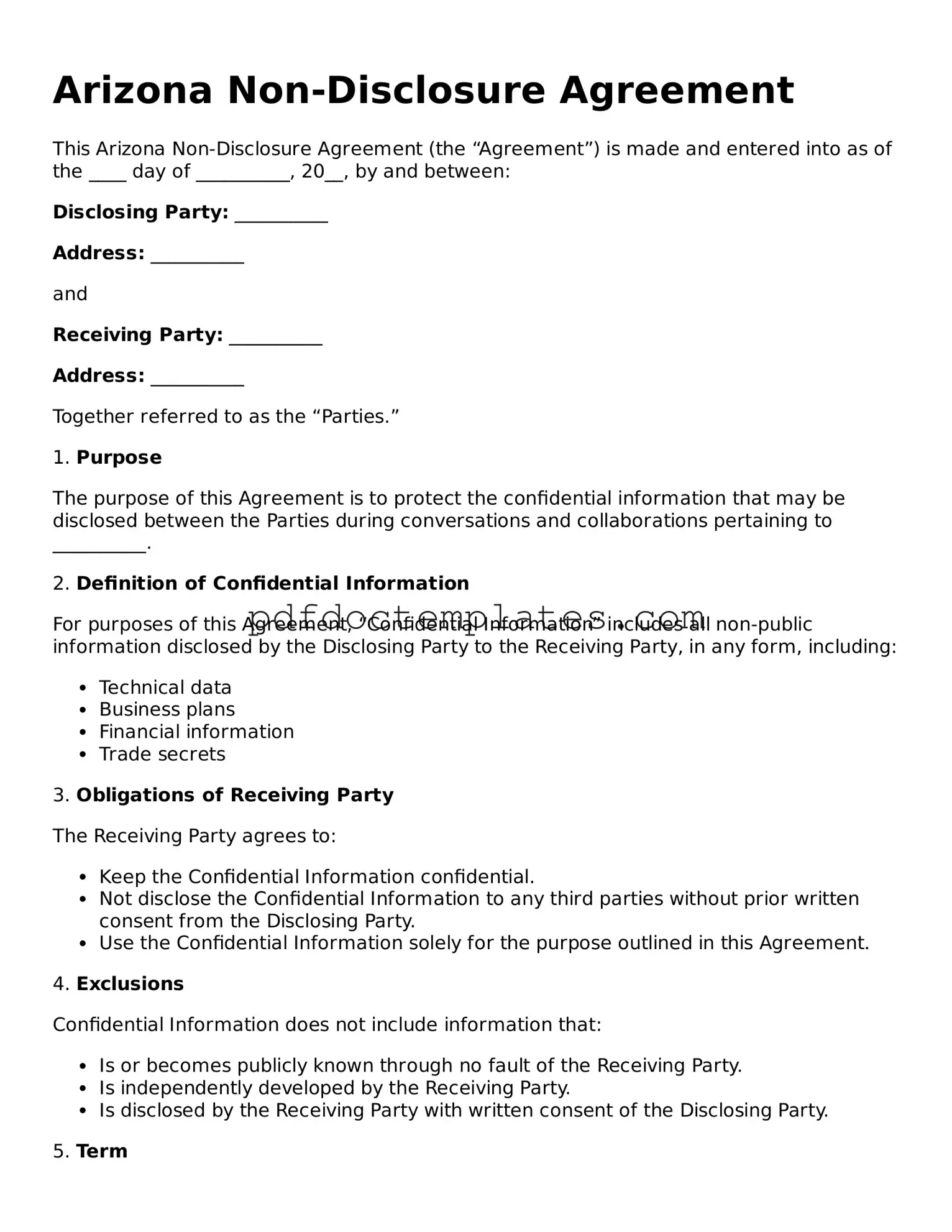Arizona Non-Disclosure Agreement
This Arizona Non-Disclosure Agreement (the “Agreement”) is made and entered into as of the ____ day of __________, 20__, by and between:
Disclosing Party: __________
Address: __________
and
Receiving Party: __________
Address: __________
Together referred to as the “Parties.”
1. Purpose
The purpose of this Agreement is to protect the confidential information that may be disclosed between the Parties during conversations and collaborations pertaining to __________.
2. Definition of Confidential Information
For purposes of this Agreement, “Confidential Information” includes all non-public information disclosed by the Disclosing Party to the Receiving Party, in any form, including:
- Technical data
- Business plans
- Financial information
- Trade secrets
3. Obligations of Receiving Party
The Receiving Party agrees to:
- Keep the Confidential Information confidential.
- Not disclose the Confidential Information to any third parties without prior written consent from the Disclosing Party.
- Use the Confidential Information solely for the purpose outlined in this Agreement.
4. Exclusions
Confidential Information does not include information that:
- Is or becomes publicly known through no fault of the Receiving Party.
- Is independently developed by the Receiving Party.
- Is disclosed by the Receiving Party with written consent of the Disclosing Party.
5. Term
This Agreement commences on the date indicated above and will continue for a period of ____ (__) years unless terminated by either Party with ____ days’ written notice.
6. Governing Law
This Agreement shall be governed and construed in accordance with the laws of the State of Arizona.
7. Entire Agreement
This Agreement constitutes the entire understanding between the Parties regarding the subject matter herein and supersedes all prior agreements and understandings, whether written or oral.
IN WITNESS WHEREOF, the Parties hereto have executed this Non-Disclosure Agreement as of the date first above written.
Disclosing Party: ____________________________
Signature: ________________________________
Date: _______________________________
Receiving Party: ____________________________
Signature: ________________________________
Date: _______________________________
